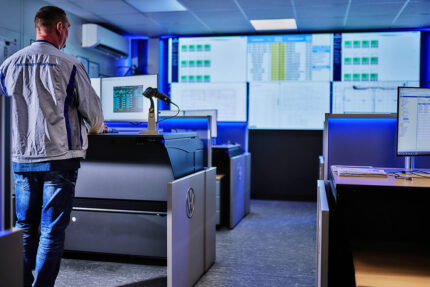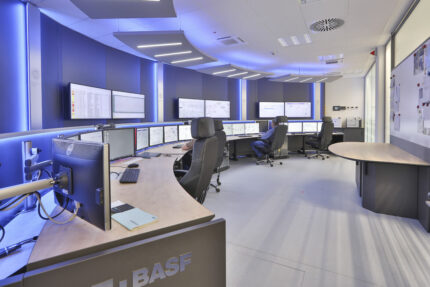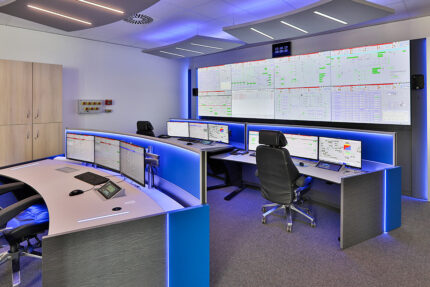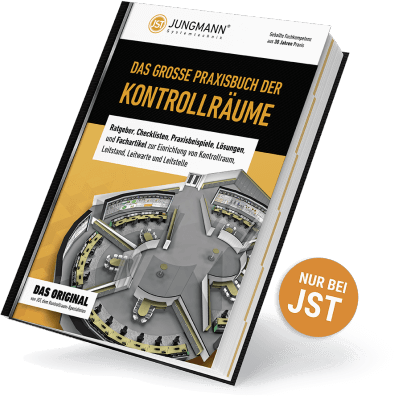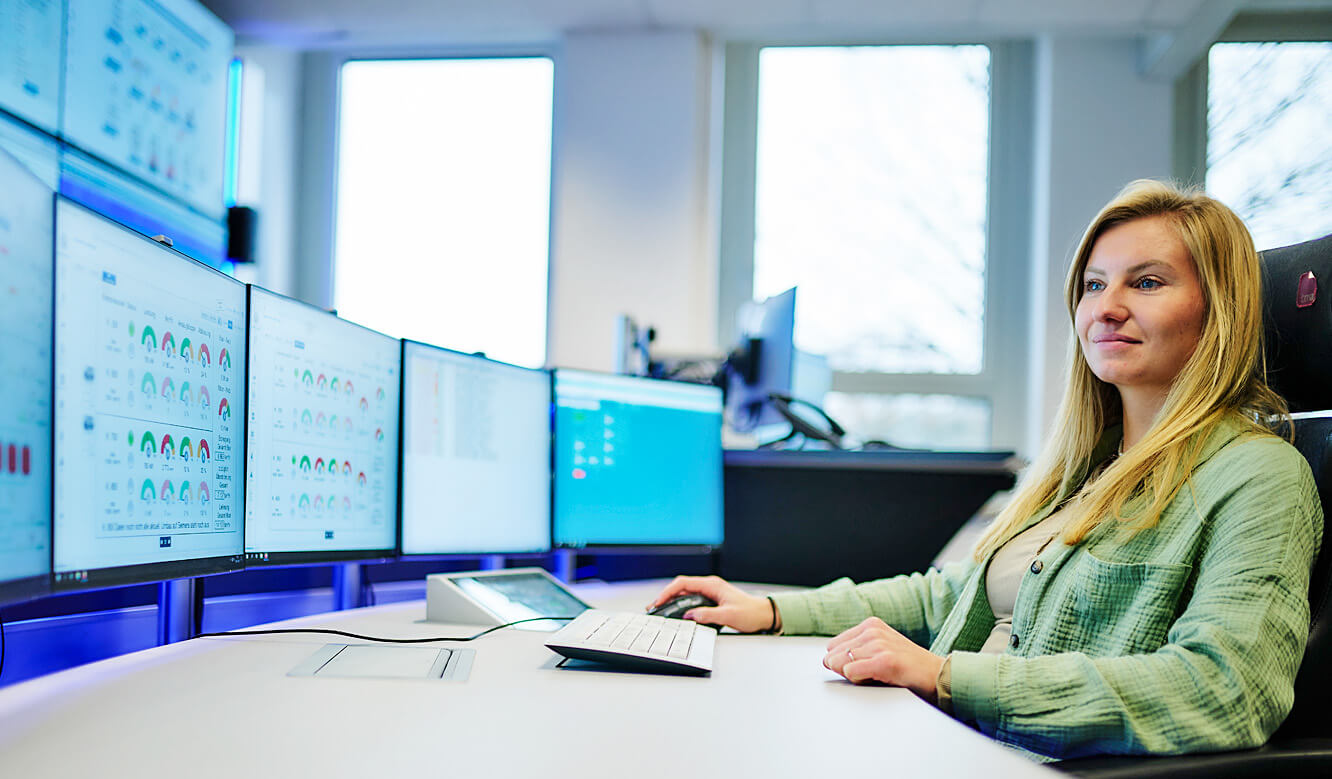
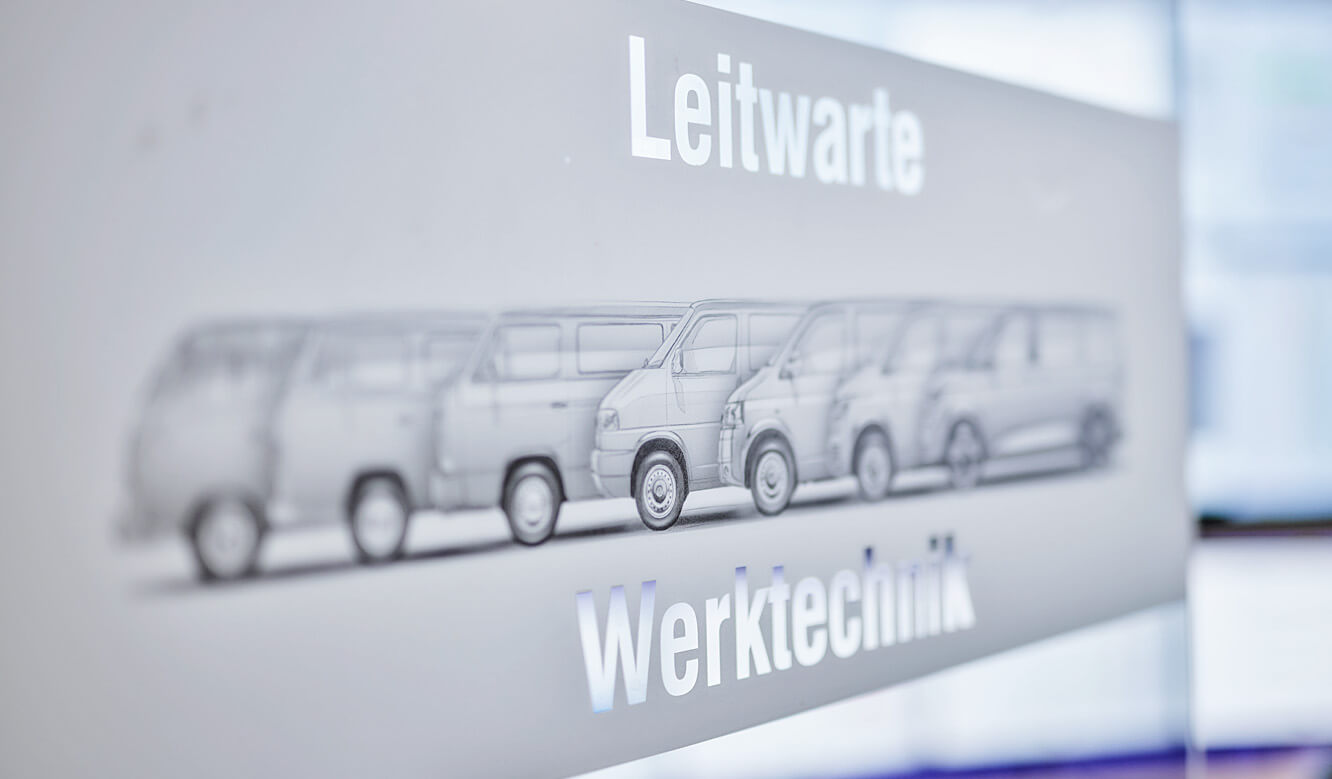
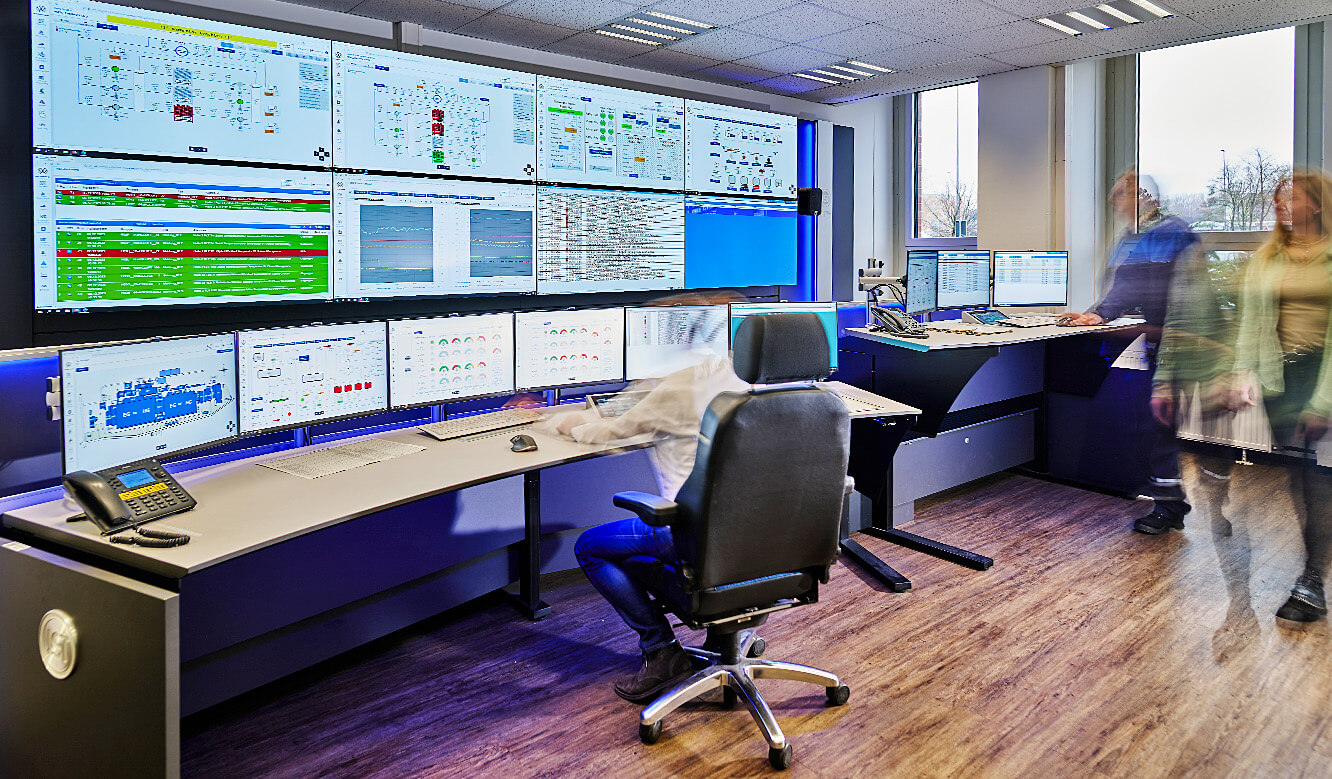
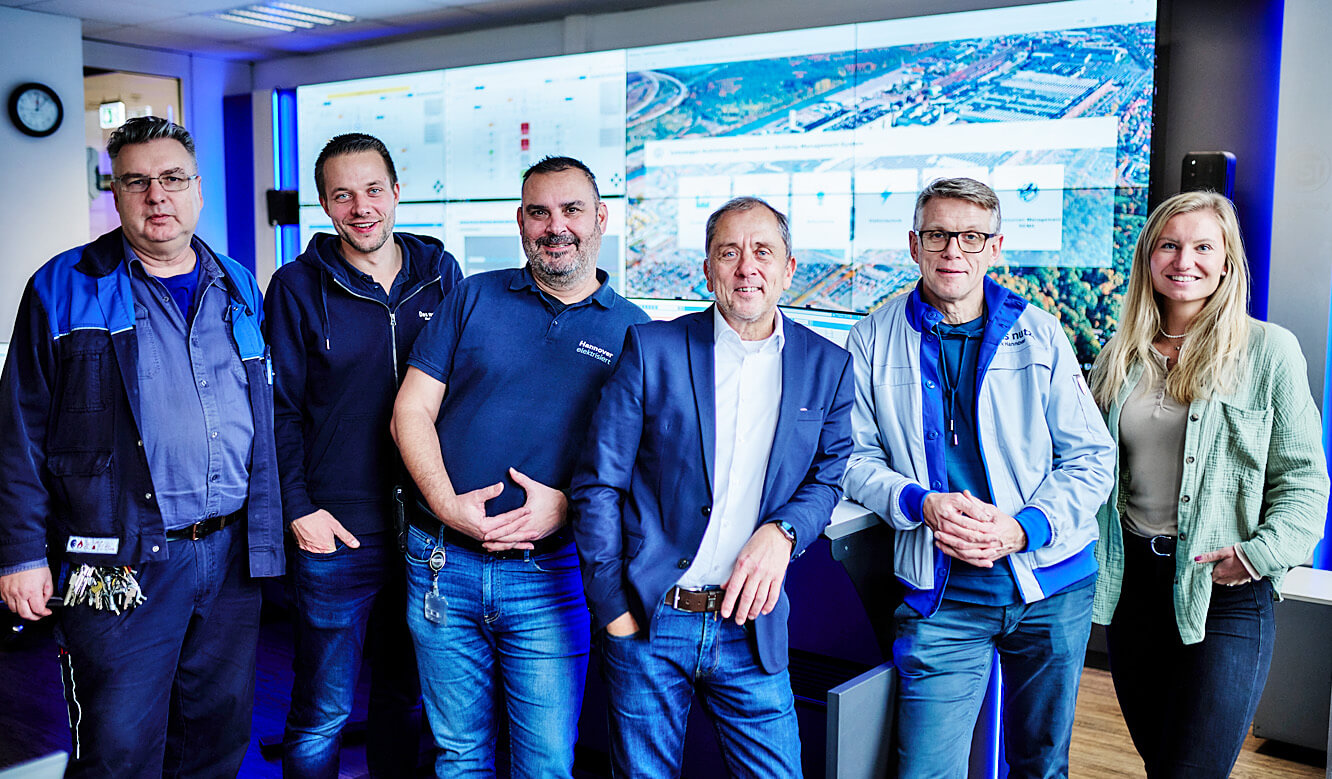
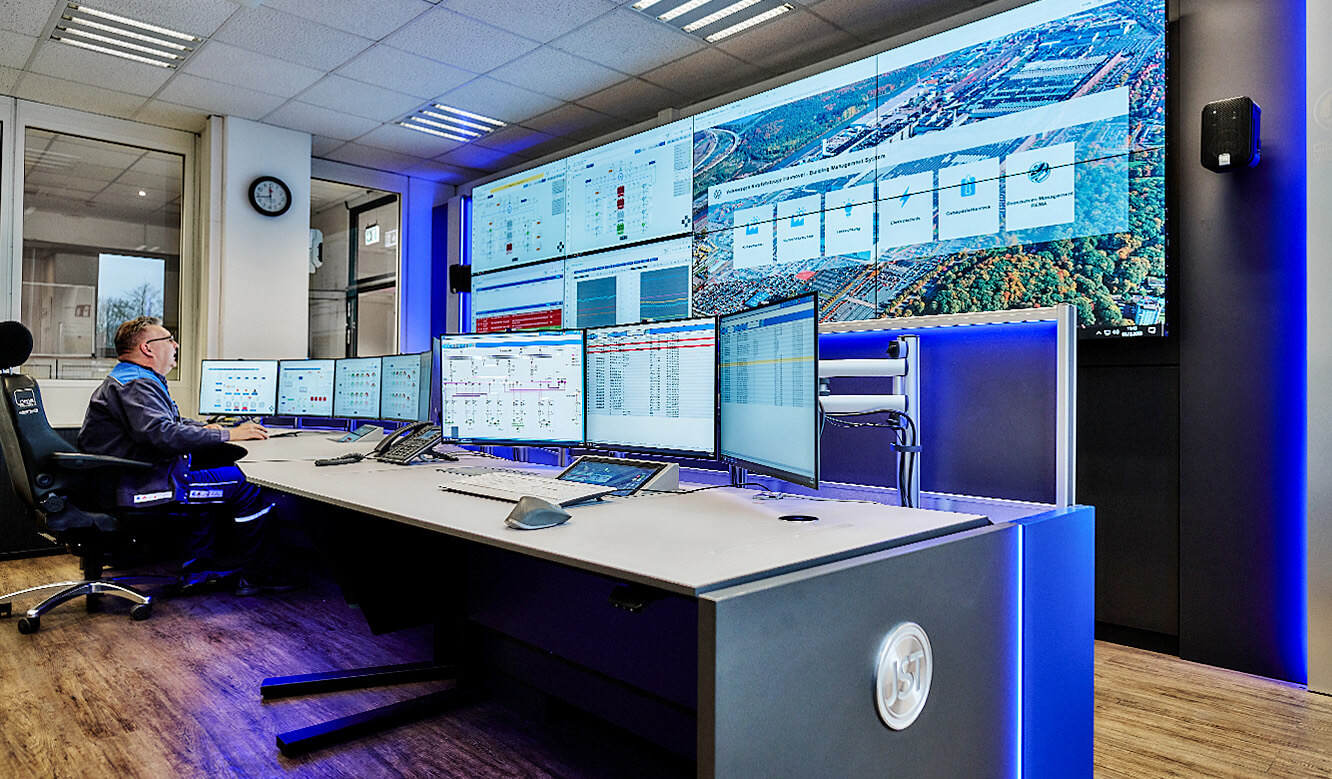
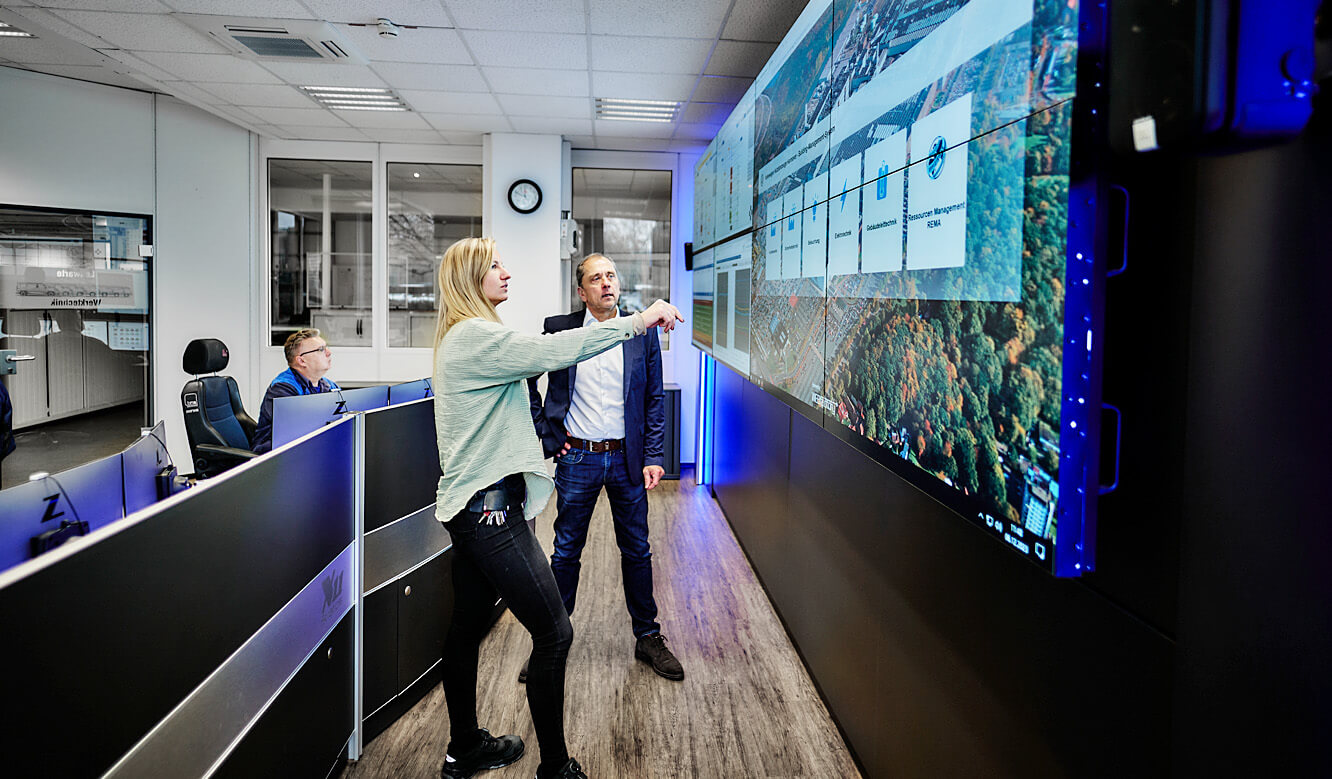
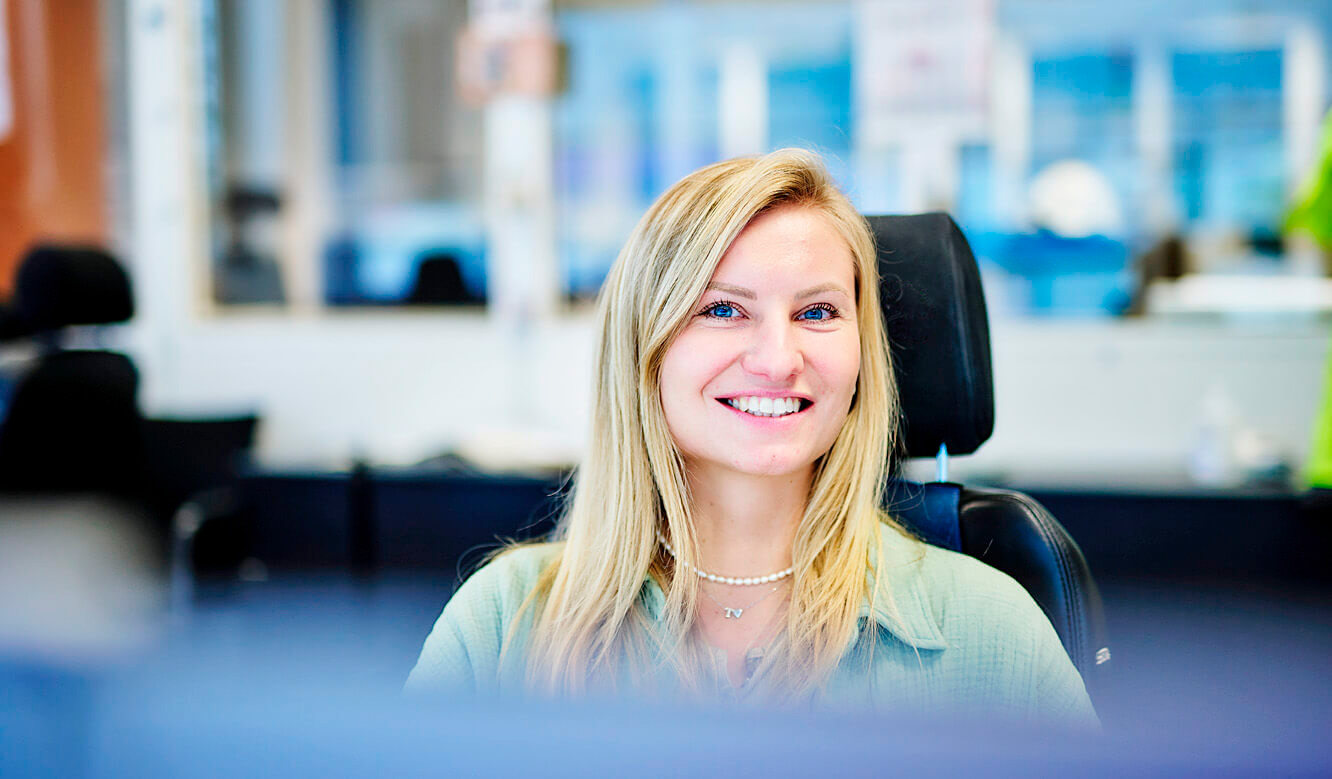
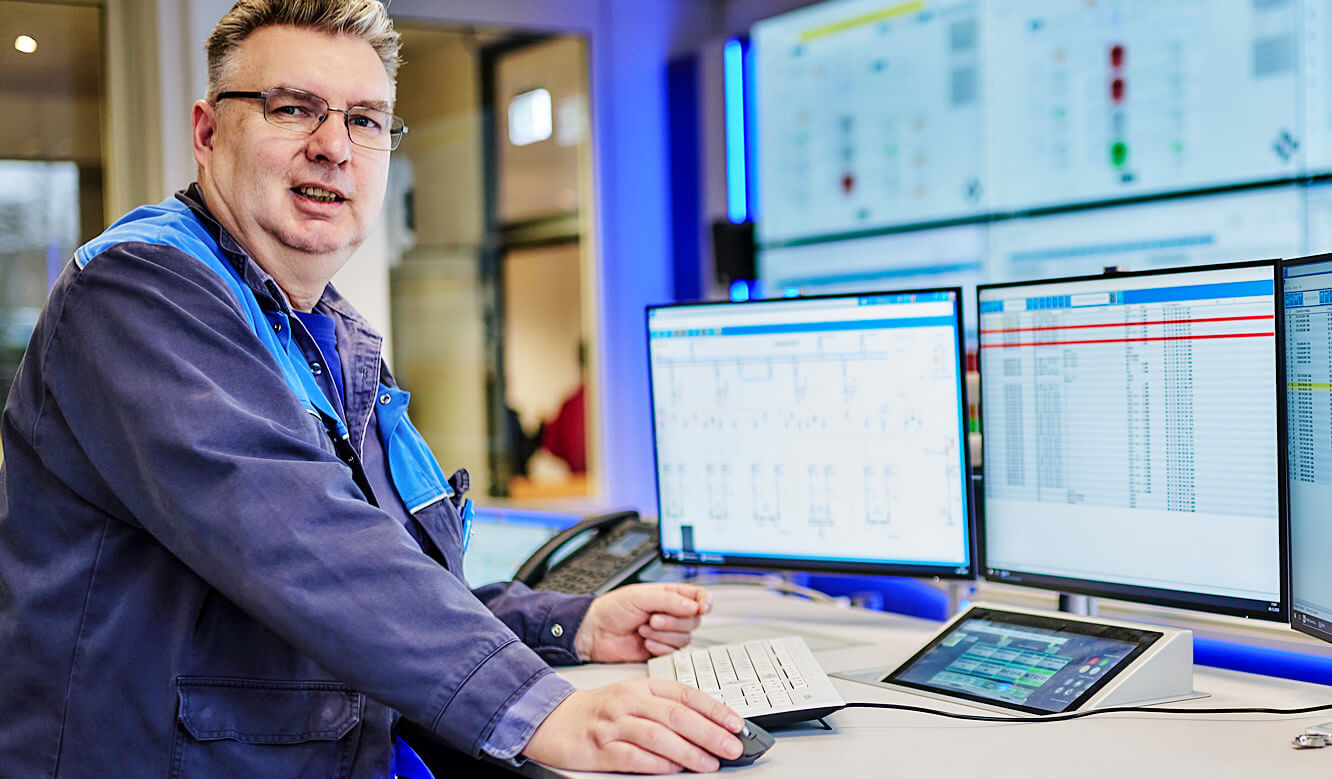

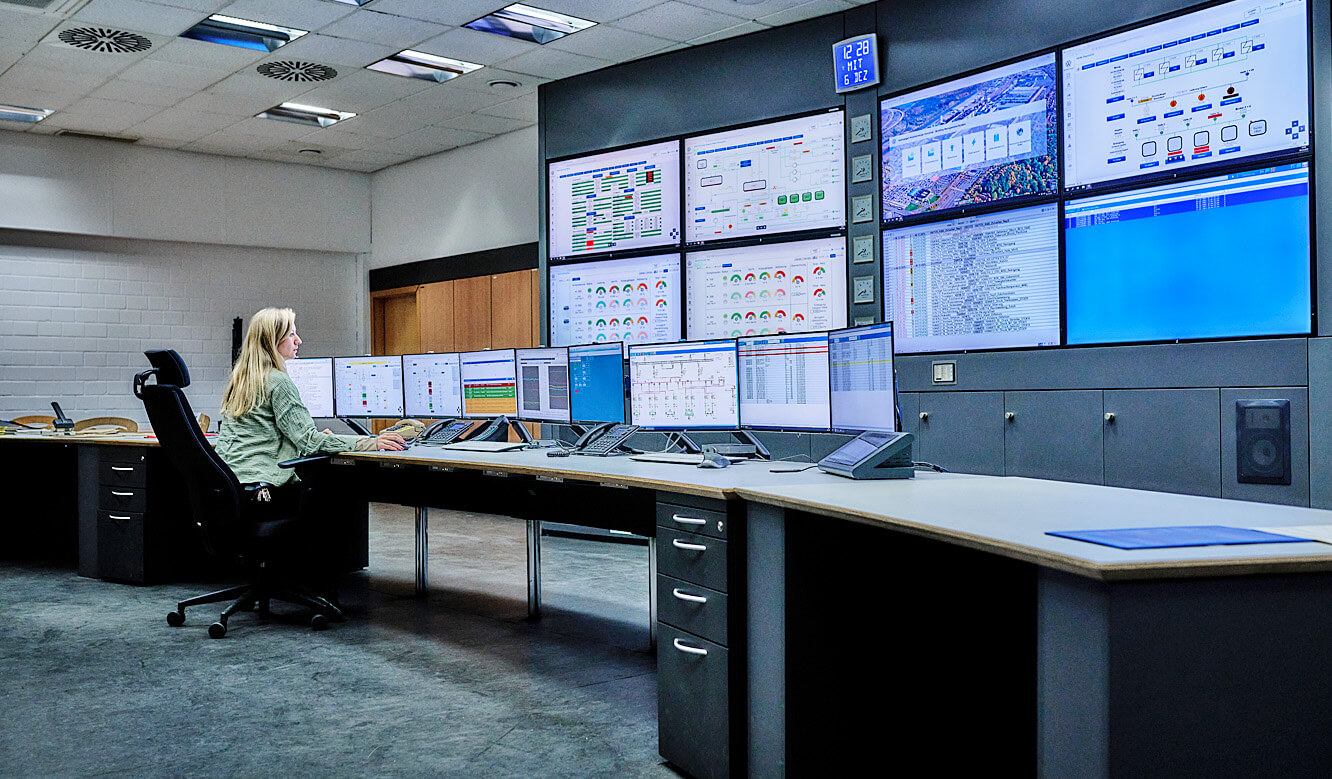
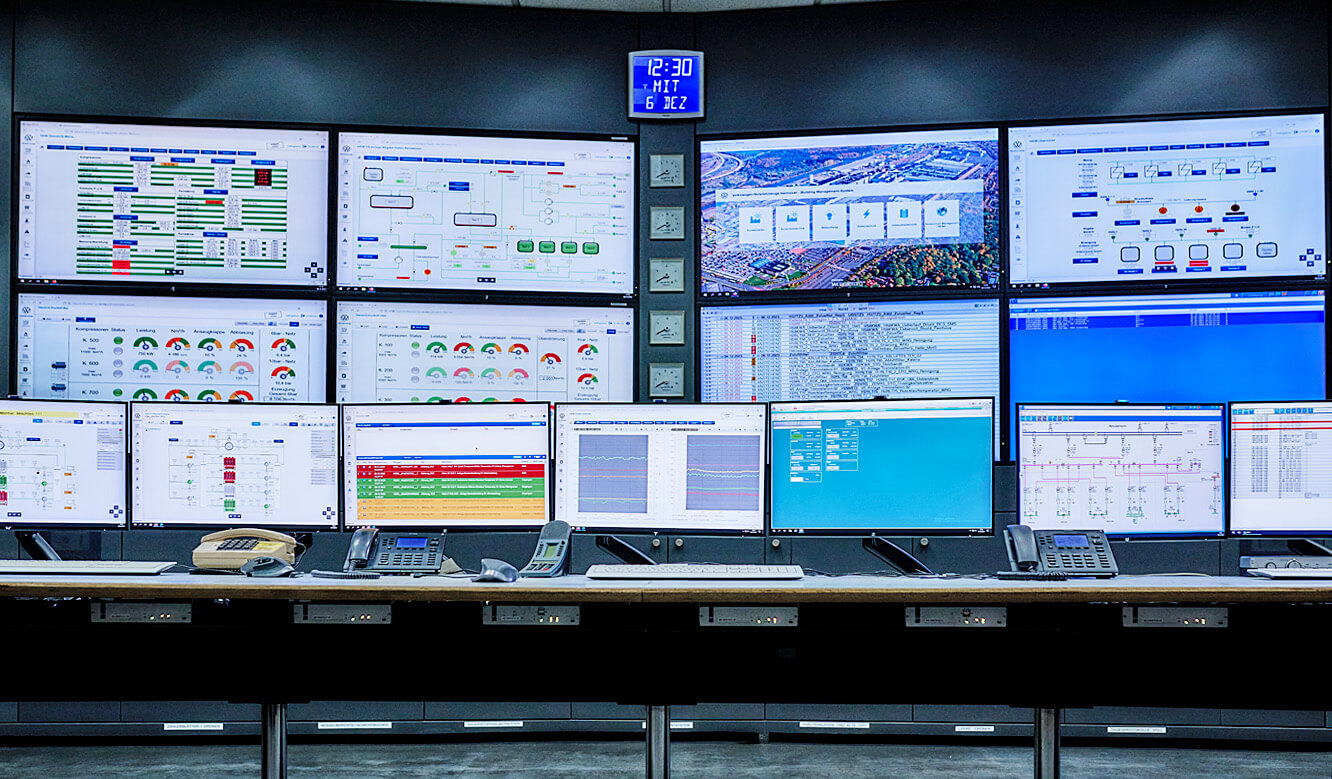
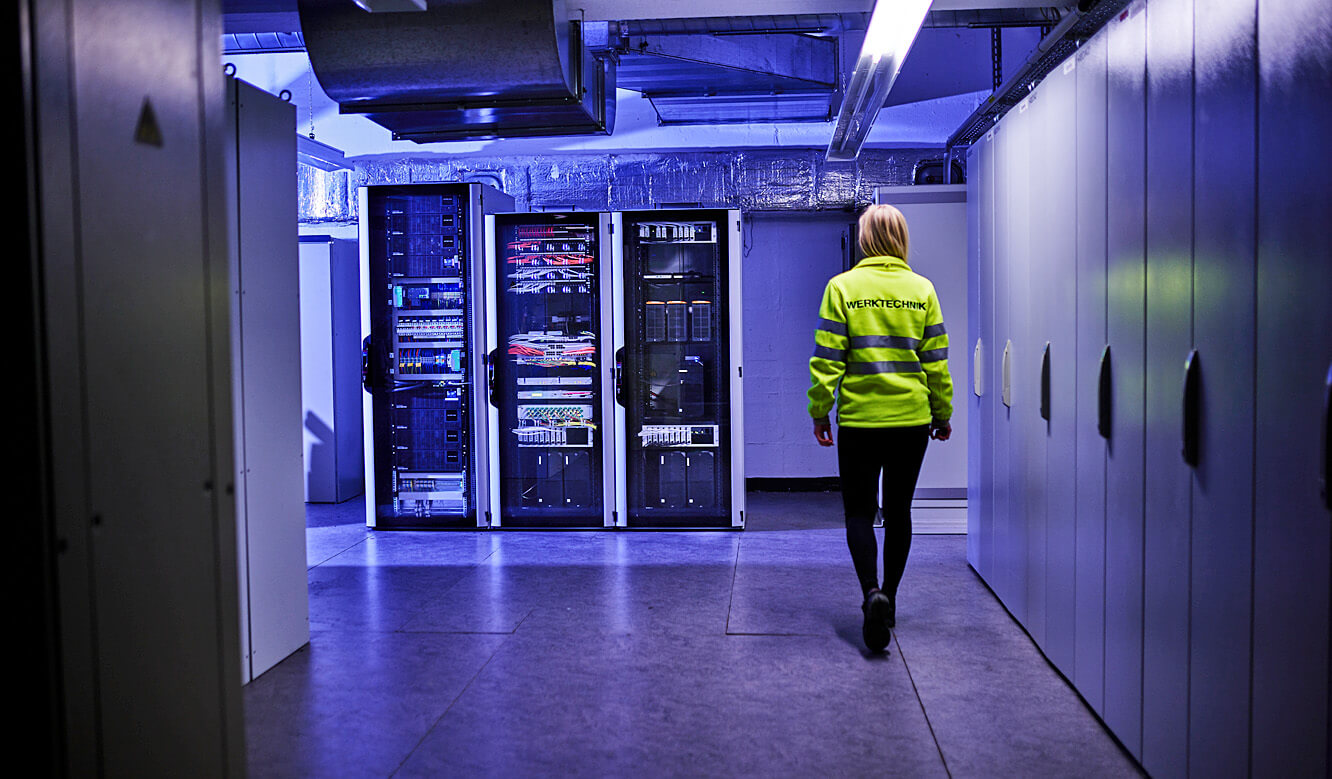
Photo 1 | JST control room: For Svenja Daubitz, it quickly became clear after a visit to the central plant monitoring room installed by Jungmann Systemtechnik a few years ago at the Volkswagen plant in Hanover: "We looked at the system there and realized that it was really good - exactly what we need to reduce the number of screens and pool expertise!"
Photo 2 | JST control center: From the Multivan to the ID.Buzz - various commercial vehicle models are manufactured at Volkswagen in Hanover. The new control room ensures that all energy and media required for the plant's production and infrastructure can be provided without interruption.
Photo 3 | JST control room ergonomics: The height-adjustable consoles of the Stratos X11® series have been specially developed for the needs of control rooms. The ergonomic furniture and the large screen wall are complemented by a technology concept that allows any source to be switched to any desired screen. In addition, JST MultiConsoling® makes it possible to access all computers in the two connected control rooms centrally, so that the wish to merge the control rooms could be realized.
Photo 4 | A better overview and simplified handling - these were the requirements that the workforce placed on the new technical concept for monitoring the energy supply at the Hanover plant. The result has satisfied everyone in more ways than one, explains Svenja Daubitz (Technical Office), here with her colleagues (from left): Frank Gibowsky (Control Room Employee), Markus Frenzel (Technical Office), Manuel Ramos (Management), Volker Weimer (JST Consultant), Andreas Buch (Management)
Photo 5 | JST control room visualization: Reduced displays at the workstation plus the clear presentation on the videowall - with JST MultiConsoling®, work in the Volkswagen control room can be optimized so efficiently that even the smallest deviations in the plant's energy supply are detected immediately.
Photo 6 | JST DisplayWall: Eight 55-inch LCDs with extra-slim frames - the large display wall in the so-called "Sector 8" control room is one of the central elements of the control station concept in Hanover. Project coordinator Svenja Daubitz explains to JST consultant Volker Weimer which application options are preferred: "We can combine several sources on the screens of the video wall or display large overview images in BigPicture mode if required. Training courses, presentations - all this is easily possible with the new equipment."
Photo 7 | JST control center planning: For Svenja Daubitz, who implemented the project together with her colleague and IT specialist Dominik Klages and infrastructure planner Knut Winkler, the positive effects are becoming more visible with each passing day: Her thanks are not only due to the Volkswagen and JST employees involved, but especially to her colleague Manuel Ramos (responsible for financing and commissioning). Conclusion of the project coordinator: "Not only in terms of shift planning, we are better positioned with the concept, we are also quite simply more flexible and obviously more effective."
Photo 8 | JST CommandPad®: For operator Frank Gibowsky, a smart support that provides an improved overview and more safety: The JST CommandPad® integrated into the interface of the control room console ensures maximum user comfort for system control. It is operated intuitively via a touchscreen, which uses the myGUI® user interface to display all sources as an interactive "control room image".
Photo 9 | JST control room concept: Everything thought of! Inductive charging pads for mobile devices and a convenient log-on process via chip card provide additional convenience and security in the control room.
Photo 10 | JST KVM technology: MultiConsoling® makes it possible: All applications that can be seen on the displays in the "Heating Plant" control station (photo) can also be switched on in the modernized "Sector 8" control room thanks to the optical waveguides connection.
Photo 11 | JST control room solution: With the completion of the installation, it serves as a kind of backup for the energy supply of Volkswagen Commercial Vehicles: the former " Heating Plant" control room. Today, the two control center groups have been reunited to form a team that manages the entire media supply at the Hanover plant from "Sector 8".
Photo 12 | JST technology: Redundant and linked over hundreds of meters: Each of the two control rooms has its "own technical heart", in which the MultiCenters are located as central elements of the JST MultiConsoling®.
Control room transformation optimized energy supply at VW Commercial Vehicles
Vehicle construction, component manufacturing, infrastructure, heating plant – the facilities at the headquarters of the Volkswagen Commercial Vehicles brand in Hanover cover an area of 123 hectares. All the buildings on the site between the Mittelland Canal, railroad line and freeway have one thing in common: Two control rooms are responsible for the entire power generation and distribution, which have not only been optimized in a pioneering way thanks to innovative KVM technology from JST – Jungmann Systemtechnik®, but have also been linked together. The advantage: the entire team of control room operators now has an overview of the whole energy and media supply from a central location.
The images from the past are still vivid in the memories of many of those involved: The images from the past are still vivid in the memories of many of those involved: columns of screens several meters long lined up next to each other. Whether compressed air supply, cooling systems, boiler installations or the control of the ventilation systems – a total of 16 individual computers, usually with two monitors each, had to be kept an eye on by a single employee. “Due to the many separate monitors, it was a challenge to keep an eye on all the systems. We wanted a significantly improved overview and therefore greater efficiency,” reports Svenja Daubitz (Power Generation & Distribution, Volkswagen Commercial Vehicles).
Idea: a team in which know-how is collected
Expansion of sustainable production at a historically grown industrial site – this was the background against which those responsible for the “Control room for energy supply” project wanted to achieve two objectives at once. In addition to far-reaching technological modernization, it was also about employee interaction. The 25-strong control room crew, which was split into two work areas hundreds of meters apart called “Heating Plant” and “Sector 8”, was to be brought together to form a unified team. The aim was to create a genuine pool of knowledge in which the skills and expertise of all colleagues could be pooled.
In individual steps to the targeted goal
Together with the control room experts from JST, a solution for the reliable and efficient management of the energy supply in the automotive plant was found in several steps. Step one: The control room for the heating plant receives a comprehensive technical upgrade. The KVM controlling with JST MultiConsoling® and an extended SCADA visualization system are used. Significantly less monitors are now required for monitoring. The individual sources can be conveniently switched to any desired screen. The heart of this innovative control solution is located in the technical room: the MultiCenter.
"We noticed right away that it works well!"
In the next step, the other part of the control room team in “Sector 8” will receive a completely new control station, equipped with large-screen technology, ergonomic furniture and, of course, MultiConsoling® technology with its core element, the MultiCenter. “We first wanted to get a feeling for the technical innovations and started to control the plant on this basis,” explains Svenja Daubitz, “we noticed right away that it works well!”
Linking the control rooms via optical waveguides
At this point, it is now possible to accomplish what the project stakeholders had in mind from the outset. Optical waveguides link the MultiCenters of both control centers. More than 600 meters are bridged. A separate network is created. The cables transmit all signals over long distances at the speed of light and with enormous data capacity. The result: All applications can be operated from the new “Sector 8” control center. “We have direct access to all sources. The brain is in the heating plant and the execution works in Sector 8,” confirms Svenja Daubitz.
Employees and company benefit from
It is not only the employees who are responsible for the energy supply at the plant who profit from now working as a joint group from one location. The ambitious project also has advantages for the company: The bundling of expertise in a single control room makes it possible to deploy employees more effectively and, for example, to react more flexibly to interruptions. “The centralization of control rooms creates greater scope for personnel planning,” says JST Consultant Volker Weimer, “our innovative technology provides answers to questions that will increasingly arise in the future as a result of the shortage of skilled workers.”
Even small deviations suddenly become visible
Initial experiences with the merger and the technology upgrade show that there are other positive effects: The various systems report deviations and faults to the operator in a targeted manner that were previously overlooked. This not only allows irregularities to be identified more quickly, it also eliminates the unnecessary stress of monitoring the previously numerous individual screens. The team can focus its attention on examining the existing systems in detail.
Effective: Errors are solved faster
“The improved visualization has suddenly made things visible that nobody noticed before,” explains Svenja Daubitz. These include, for example, ventilation systems that have been improved in terms of energy efficiency and control technology. Conclusion: “With the new technology, we can not only track down such errors, we can also solve them more quickly.”
You are currently viewing a placeholder content from YouTube. To access the actual content, click the button below. Please note that doing so will share data with third-party providers.
More InformationUnsere Referenzen heute (Auswahl)
A
B
C
E
H
I
M
N
P
R
S
- s.Oliver, Rottendorf
- SachsenEnergie, Dresden
- SAG, Berlin
- SAG, Nürnberg / Nürnberg Messe
- Salzgitter Flachstahl
- Senvion SE, Osterrönfeld
- SGL Carbon Group, Bonn
- SIEMENS
- SIEMENS, Wegberg
- Spenner, Erwitte
- Städtische Werke Magdeburg
- Stadtwerke Gießen
- Stadtwerke Ratingen
- Stadtwerke Schwerin, Kraftwerk Süd
- Stadtwerke Steinburg GmbH, Itzehoe
- Stadtwerke Wolfenbüttel
- Starlim Sterner, Marchtrenk
- STORAG ETZEL, Friedeburg
- Straßenverkehrsamt Frankfurt am Main
V
Unsere Referenzen (Archive)
